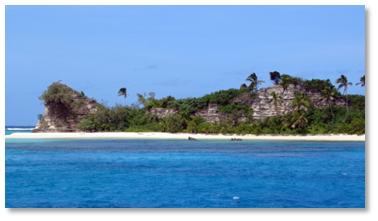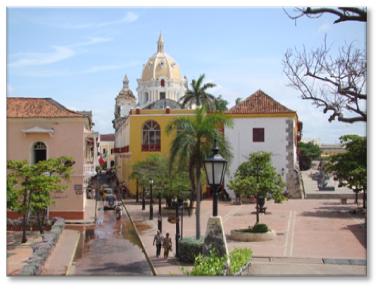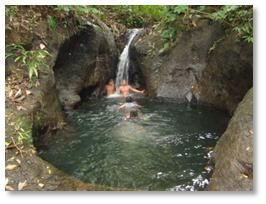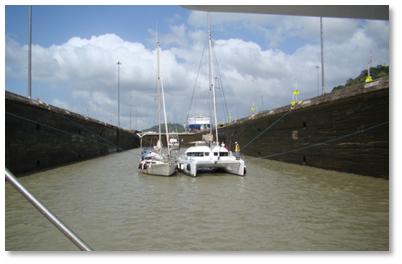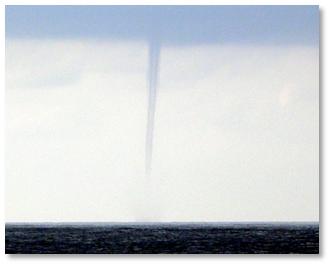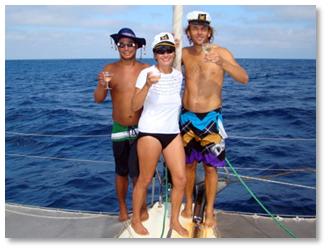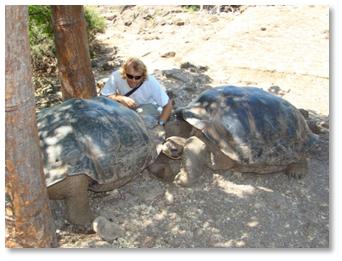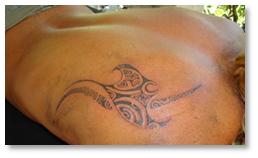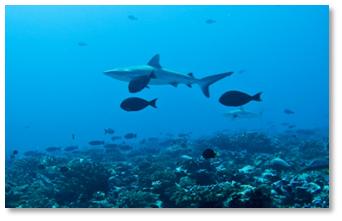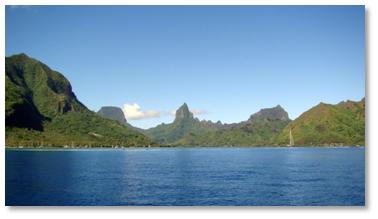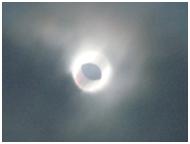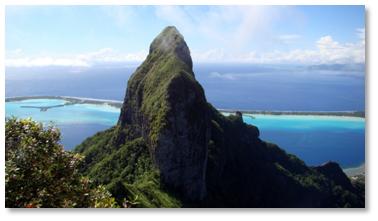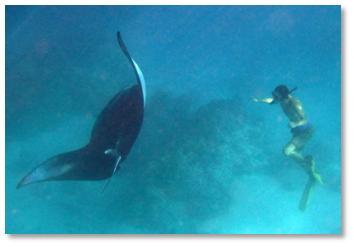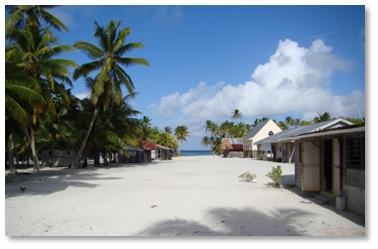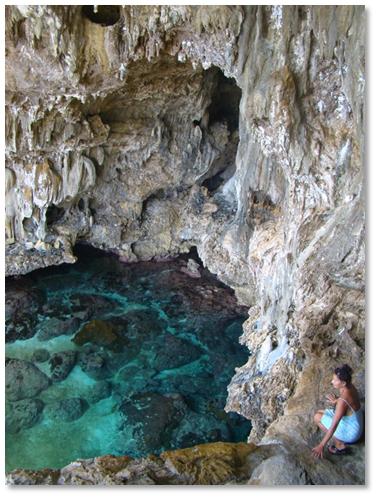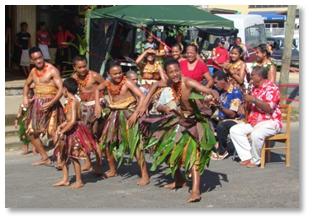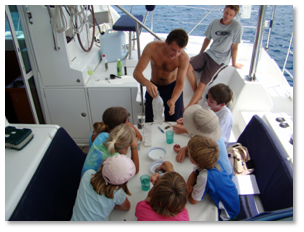Pictures of Helen, Ben and I can all be found on this years Regatta Vava’u website. Helen and I are rather obvious but Ben can be found too if you look close enough. Follow the link and try and find us.
|
||||
|
Last year I wrote a retrospective on our first year out cruising. Once again I have been persuaded to write another one on our second year out. Two years on and what a second year. How we’ve grown as sailors and explorers. Our first year was about learning the boat, gaining further sailing experience, adjusting to living on a boat and with each other. We accomplished this sailing down the eastern Caribbean where although challenging, the waters were accurately charted, anchorages fully described, major hazards well marked and emergency help and resources generally nearby. The confidence we gained the first year certainly prepared us for the second year as we headed westward to the not so well charted waters of central America and over to the Pacific. In our first year we traveled 2,268 nautical miles and never did more than an over night passage. In our second year we’ve covered 9,100 nautical miles, and have done many multi-day passages including a 22 day, three thousand miles Pacific crossing. When I started outlining this blog we were anchored just behind a large reef which protected us from the ever increasing ocean waves but not from the 25 to 30 knots of wind screaming over us. We were in a remote spot miles from any form of civilization. With the sounds of crashing waves over the reef and the howling wind around us we got on with our daily routine. We were pretty The following morning we decided to move to another anchorage as we wanted better protection if conditions changed for the worse. We set sail in nearly 30 knots of wind, slamming into huge waves, tacking side to side, fighting currents, avoiding reefs, exposed rocks, small islands and blind roller waves. As we approached our destination we had to carefully negotiate our way through gaps in the reefs to the protected anchorage behind a small island. Always tricky in strong weather. This is also the place where less than a month ago, a couple we knew ran into the reef and sank their boat! A year ago I would have been scared witless sailing under these conditions and would have completely panicked at seeing all the breaking waves and swells approaching our anchorage. Now days we just do it. Our time in the Tuamotus and the Society Islands taught us a great deal about entering dangerous gaps and passes into atolls and reefs. So we were aware of possible hazards and confident about our approach. Although we’ve grown as sailors we never underestimate the dangers of the wind, sea and sailing near land. We check the weather daily, never over rely on our charts, always take visual clues, are aware of tides and current and we generally side on caution. If we become too complacent we should quit sailing. Another big difference for most of the second year is that we’ve had a crew member on board with us. John our eldest son joined us in Panama last December and crewed with us until we reached Tahiti in June. Two weeks after John returned to England, Ben our middle son joined us and will be staying with us until we reach New Zealand. Having a third person on board has been extremely helpful especially during long passages. Sharing shifts and watches between three people during passages allows for longer sleep, more free time and keeping ones sanity!
This leads to the highlights of our year. Once again there are just too many. What I’ve decided to do is make a list of the countries we’ve visited in chronological order and briefly mention some of my favourite places and moments which I can remember at this moment. Columbia: The historic port of Cartagena, one of my favourite cities. The old city is considered one of the most beautiful on the American continent and I agree. Charming little squares, medieval style narrow streets, wonderful Spanish colonial architecture and its amazing city wall. It is also considered the safest city in Colombia so we were not too worried about being kidnapped and felt reasonably secure wandering the streets. One of the highlights during our stay there was being invited to the Colombian Navel Officers club by Derek & Martha a lovely couple we got to know there. We tried sailing on little Sunfish boats for the first time, had a wonderful lunch at the club house and explored the old fort which was exclusively inside the club’s compound.
On our way down to the Panama Canal we visited a couple of ex cruisers who have rescued and adopted four sloths. Holding and cuddling those sloths kept a grin on our faces for a long time. While waiting for our slot through the Panama Canal we went up the Chagres River for few days. Taking our boat up the serene river, banked by lush jungle was magical. We explored many side streams and openings looking for an elusive waterfall we had heard about. Every night we were serenaded by howler monkeys, a cacophony that kept poor Annie anxious and awake most of the night. Finally finding the waterfall on our last day, a little gem, where we swam and washed in the clear pool under the falls. Unforgettable! Panama Canal: Transiting the Panama Canal on our own boat was an awesome and unique Panama City: Although I wouldn’t say that Panama City was one of my highlights it was certainly a momentous place. Sam and Annie left us there to return to the States and college. Except for the old city its a pretty horrible place. However it’s a mecca for bargains and cheap shopping so was the perfect place to provision for our Pacific crossing. We spent days filling our boat up with excellent cheap wine and beer, dried goods, cans and luxury treats, snacks and gifts for children in the remote Pacific islands. With a much lower water line, we happily left Panama City and headed out to explore the waters of the Pacific for the first time. Pacific side of Panama: Our first stop was the Las Pearlas islands, another set of beautiful islands. Considering these islands are only fifty miles from Panama City, they were surprisingly unspoilt and non commercialized. It was here we really learned how to anchor in tidal changes of up to 20 feet. What depth to anchor and the consequence of letting out too much or too little chain. At one place, we anchored at high tide only to find rocks popping up around us as the tide decreased. John slept up on deck keeping an eye on how near we got to the rocks as the tide went down. Fortunately there wasn’t any large boulders under us and our chain was just short of reaching the nearby rocks. Not our best anchoring moment. Journeying along the Panamanian coastline we stopped at many remote and isolated anchorages. The coastal stops were not as nice as the islands but all were new and interesting to us. One of the most beautiful anchorages we’ve visited was off the Secas islands. Definitely in my top ten.
Costa Rica: This is the country where we had the most difficulty checking into. It took a day and half and a lawyer to finally clear us in. Having said that, once we were in, we really enjoyed our time here. Costa Rica is famous for its Eco tourism and fabulous national parks. Ella, John’s girlfriend joined us for a two weeks vacation and we explored the coast and nearby national parks with her. We saw plenty of wild life, especially monkeys and colourful exotic birds. Later, Ben and his girlfriend Jess joined us for their Spring break. With them we explored the inland cloud forests and the area around the volcano, Mount Arenal. We also had a lovely time visiting with Jason Bell my ex colleague from Solomon Schechter Day school, who is now living and teaching just outside the capital of San Jose.
A migration of turtles passed us causing continuous ripples and patterns on the smooth water. At first we thought they were floating coconuts and then realised that they were humps of their shells. We must have hit their migration highway as hundreds passed us for hours going in the opposite direction.
The Galapagos Islands: I would not describe the Galapagos as being beautiful. Dramatic is a better description with interesting basalt formation, long white sand beaches and striking lava flows. Most of the vegetation are cacti, bushes and small trees. For many people, including us, the unique fauna and marine life of the Galapagos is what we’ve come to see. And we certainly saw them. Giant tortoises, lava lizards, land and marine iguana. We scuba dive and snorkeled with hammerhead sharks, white tip sharks, sea lions, penguins, rays and turtles. A once in a life time place to visit. The Big Pacific Crossing: Three thousand miles and twenty two days out at sea. It’s difficult to explain what goes through ones mind. Steve, John and I wrote a daily blog during this passage. Here is the link to these blogs if you interested in knowing a little of what was going through our minds while floating in the middle of a vast ocean. http://aboarddignity.com/blog/?cat=37&paged=9
On the islands of Ua Pou, Steve and I each had a Marquesan tattoo done as a rite of passage. Tattoos are something I didn’t really approve of but Marquesan tattoos are very unique and special. We found an excellent local artisan called Kina who worked on our tattoos from his front porch. His house was up a hill, surrounded by a lush garden and a lovely view out to sea. Being in such lovely setting helped nullify the discomfort of being tattooed. The theme of my small tattoo was the waves and seas of the Marquesas with intricate motifs and symbolic meanings. Steve’s larger tattoo was a manta ray with a staff of life, again with detailed symbols. After finishing our tattoos, Kina invited us to share a delicious lunch with him. Before we left he insisted on picking us fruit for from his garden. We walked away with two gorgeous tattoos and two huge carrier bags full of tropical fruit. Just wonderful! Tuamotus: The Tuamotus are an enormous arc of coral atolls. A true atoll is formed of unbroken circular reefs with an interior lagoon. Fortunately for us, many of the large atolls have one or two broken opening in the reef forming passes for boats to enter into the protected calm interior. These inner lagoons are stunning with turquoise clear waters and fringed with islets of golden sand and palms trees. However great care has to be taken entering and exiting these atolls. The current flowing in and out of these passes is very strong. During mid tide and bad weather, whirlpools and standing waves form in the pass making it very dangerous to enter. So timing for slack tide and careful eyeballing the pass is a must.
My favourite atoll was Fakarava. It had the best scuba diving and snorkeling we’ve ever done. The water was crystal clear, the coral life was immense and colorful and marine life abundant. Drift diving through the south pass was incredible. We saw dozens of sharks which wasn’t that many as many other divers saw hundreds. Fortunately these white and black tip sharks have no interest in us humans. No other snorkeling or diving sites has measured up since. We say we’ve been “Fakarava’d”. We also visited a black pearl farm, the main industry in these atolls now. Fascinating to learn how they grow and harvest the pearls. Steve bought me a necklace with a lovely single black pearl for our wedding anniversary.
In Tahiti we joined the Rendezvous rally. This ended up being a three days fun packed event for us sailors. We met up with many old friends and also made many new ones.
After Ben joined us we set sail to visit the rest of the Society Islands. Each one was beautiful and on each one we had our little adventures.
The last island we visited in the Societies was Maupiti, the most remote and unspoilt. Here we swam with these amazing giant manta rays. They must have been more than eight feet wide. Have I mentioned how often we see dolphins and whales? They often escort as we approach land, as if they’ve come to welcome us. Each time is just as thrilling.
After more than twelve months of being in either a French or Spanish speaking country it was wonderful to arrive at an English speaking place. Dealing with immigration and custom was a pleasure and we could read every sign and information posters. The most extraordinary island we visited in the Cooks was Palmerston Island. The inhabitants of this island are all descendents of William Masters an English man who settled in Palmerston with three Polynesian wives. The island has been divided up for the three branches of the family, each branch being descended from one of Williams’s three wives. Two of the families vie to host cruisers who arrive on the island. They feed their guests, give tours of the tiny island, offer laundry and showers and generally make their visitors feel as welcomed and comfortable as possible.
In exchange for their hospitality we offered them goods that we had on board. Since a container boat only visits Palmerston once or twice a year, they were thankful and in need of almost everything we could offer. We gave them them fresh fruit and vegetables (much appreciated), tin food, dried goods and any treats we had to spare. We also gave Ed gasoline for his outboard, fishing hooks, our rusting 300 ft anchor chain and small electrical parts and small miscellaneous items. We fixed a couple computer printers that belong to the school and admin department and a lap top power supply of an extended family member. The island was a strange contrast of basic subsistence with quite advance computer technology!
Tonga: Another favourite place. The Kingdom of Tonga is a perfect sailing ground with some of the most scenic and unspoiled groups of islands. Here we enjoyed the Vava’u Regatta, probably the most fun packed week we’ve had since starting our cruising life. Ben got recruited into helping with the Regatta and ended up having an amazing time and After our busy time in Vava’u, it was wonderful to relax and chill out in the distant islands of the Ha’apai group. While visiting one of these remote island we were invited for lunch by a local family. We were served a feast of lobsters, fresh fish deliciously fried in batter and local vegetables. While we ate our food, our host and hostesses fanned away flies from us and our food. We, as custom I could go on and on about all the great moments and places. I feel I’ve only hit the tip of the iceberg. Visiting wonderful places, seeing amazing sights, observing incredible wildlife, discovering unique cultures, tasting their foods and enjoying wonderful hospitality, is what cruising life is about. There is the other side too. Continually maintaining and fixing our boat, struggling to get spare parts, dealing with difficult officialdom, language barriers and slow communication. Other low moments were saying goodbye to John when he returned to England and saying goodbye to friends we may never see again. Also hearing about other cruisers who have severely damaged or entirely lost their boat. The worse was hearing that a young cruising friend of ours, just last week, died of a blood infection here in Tonga. It was only four weeks ago that we were sharing a beach fire and BBQ with her. There are times when I long for land life again. A nice home and the comfort and security it provides. A familiar community with family, friends and good facilities nearby. These thoughts usually occur after an unpleasant incident, when things go wrong with the boat or anticipation of a difficult passage. When I really think about it, would I give up this life of adventures, exotic locations, remarkable experiences, being footloose and fancy free, returning to a normal, mundane and predictable life on land. No, I don’t think so! Even on land I remember feeling worried, insecure and faced risks just driving to and from work each day. The highs of the cruising life far far outweigh the lows. The real question is. Will I ever be able to give up this life!!!!
No trip to town today. Ben and I used the morning to clean up the starboard hull and both props. After doing this I decided to set the first reef into the mainsail as that is what we’re likely to need tomorrow. Bad news. The lower part of the sail got caught in the reefing pulley near the mast and tore. So another set of sewing, taping and ironing was required to sort this out. Fortunately, as this was low down I was able to perform the patch without removing the sail. If this becomes an issue while sailing we’ll just have to keep the first reef in which, given the winds ahead of us, will be what we’re doing a fair bit.I’d invited all the cruisers setting off tomorrow to a 3pm meeting to have any final discussion on the weather and to agree nets. We have agreed to use the morning ‘Penguin’ net as our means for checking in with each other. This net has almost run out of steam as it was down to the boats recently heading down to New Zealand to man it and they’ve mostly arrived. Four of us (Attitude, Us, Imagine and Sea Mist) have agreed to run the net for the next week or so and hand it over once we’ve arrived.
Helen has polished off her two year perspective (which was also accidentally truncated when it was last posted) so the earlier version has been deleted and will be resent shortly. I have finally uploaded my photos and updated prior blog entries. The ones with new albums can be found on our ‘Recently Updated‘ link. I’ve also figured out how to post messages containing pictures via our HF radio so we may have some more interesting blogs ahead. Everything is now ready for the off in the morning. The dinghy has had everything removed and is now tied to the davits. Jacklines are installed. We’ve made spare water and topped off the tanks. The genset has been retested. Nothing more to do. In the morning I’ll do one final weather check and decide when to leave. It’s looking more and more like we’ll leave before I run the net at 7:30 as I want to make good speed as a low pressure system is now developing north of us and coming down in a few days. We want to be well away from it when it passes through this area. Chances are our next blog will be while at sea. Bugger – I’ve just realized I still have the washing up to do. In the morning Helen and Ben took the water taxi into Nuku’alofa while I went ashore here to Big Mama’s for some internet and weather discussions. There weren’t too many people in Big Mama’s that morning so I was able to sort some paperwork out and get up to date with our tracks. One thing I didn’t manage to do was link some photo albums I’ve recently uploaded to their respective blogs. In the absence of this, the albums can of course be seen on our general photos page http://www.aboarddignity.com/photos.htm. In the afternoon I had planned to scrape the starboard hull. I decided to do some early parts replacement on the genset first. If we end up motoring the last day or two I want to minimise the possibility of any issues there. I therefore replaced the impeller as well as both fuel filters. Prior to replacing the fuel filters I ran the fuel pumps for about 20-30 minutes on each tank giving the fuel a bit of a polish on the old filters. While that was happening I replaced the impeller. This time two blades had broken off and I found three wedged in the ins and outs to the chamber holding the impeller. Once I’d changed out the fuel filters I again ran the fuel pump to purge out any air. When I started the genset to check it was ok it made a terrible noise and failed to start properly. It’s normal practice, when putting new fuel filters on, to fill them with fuel before putting them in place. I’ve always managed to get away with this as the priming action has got rid of the air. I checked the primary filter an no fuel had made it in there so with Ben’s help I filled it, screwed it back on, ran the fuel pump for a couple of minutes and retested. All was ok with the engine. Except for one thing. Sea water was squirting at high pressure from around the raw water pump housing the impeller I’d just changed. Nothing for it but to take the pump apart and inspect it all. Some of the water tight surfaces looked a bit grimy so I figured it needed a bit of a clean up before reassembly. As this was the first time for me to do something like this I called Stuart over from Imagine to offer any advice. I’m glad I did as he was able to advise me how to really clean up the salts that had built up on the shaft. I also found a pump rebuild kit I had as spares so a lot of the parts I replaced for new leaving cleaning up the old ones for a later date. With everything reassembled I fired up the genset and all was ok. Phew. Good news we did this as now I feel we have a more reliable genset. With all the extra time spent on the genset we’d run out of time to clean the starboard hull. Helen had bought a six pack of beer in the morning (I’d suggested 12) principally to have some for our arrival in New Zealand. These were soon quaffed to celebrate our improved generator before we cleaned up and headed ashore for our final night out. Quite a few folks showed up which was nice. We had plenty of beers and had one last meal. Ben and Ian ended up going back with our last bottle of nasty Tongan rum in exchange for more cava which was doing the rounds with the youngsters. He’ll be as agile as a sloth today I’m sure which will be fun because he’s supposed to help out with the hull cleaning. The weather picture looks slightly improved on yesterday. The winds look as though they’ll begin turning to the east a little earlier. No news on the stalled high at the other end. We’ll just have to take our chances with that when we are on the move. Today we’ll focus on getting the boat ready for passage so we can leave as soon as we want in the morning. I’ve split our Tonga tracks into two parts. The first part is in and around the Vava’u group.
Part two is our travels through the Ha’apai group and then down here to Tongatapu.
If you zoom into the northern part of this second map you’ll see our various tacks into wind. |
||||
|
Copyright © 2025 Aboard Dignity (Lagoon 420) Blog - All Rights Reserved Powered by WordPress & Atahualpa |
||||
